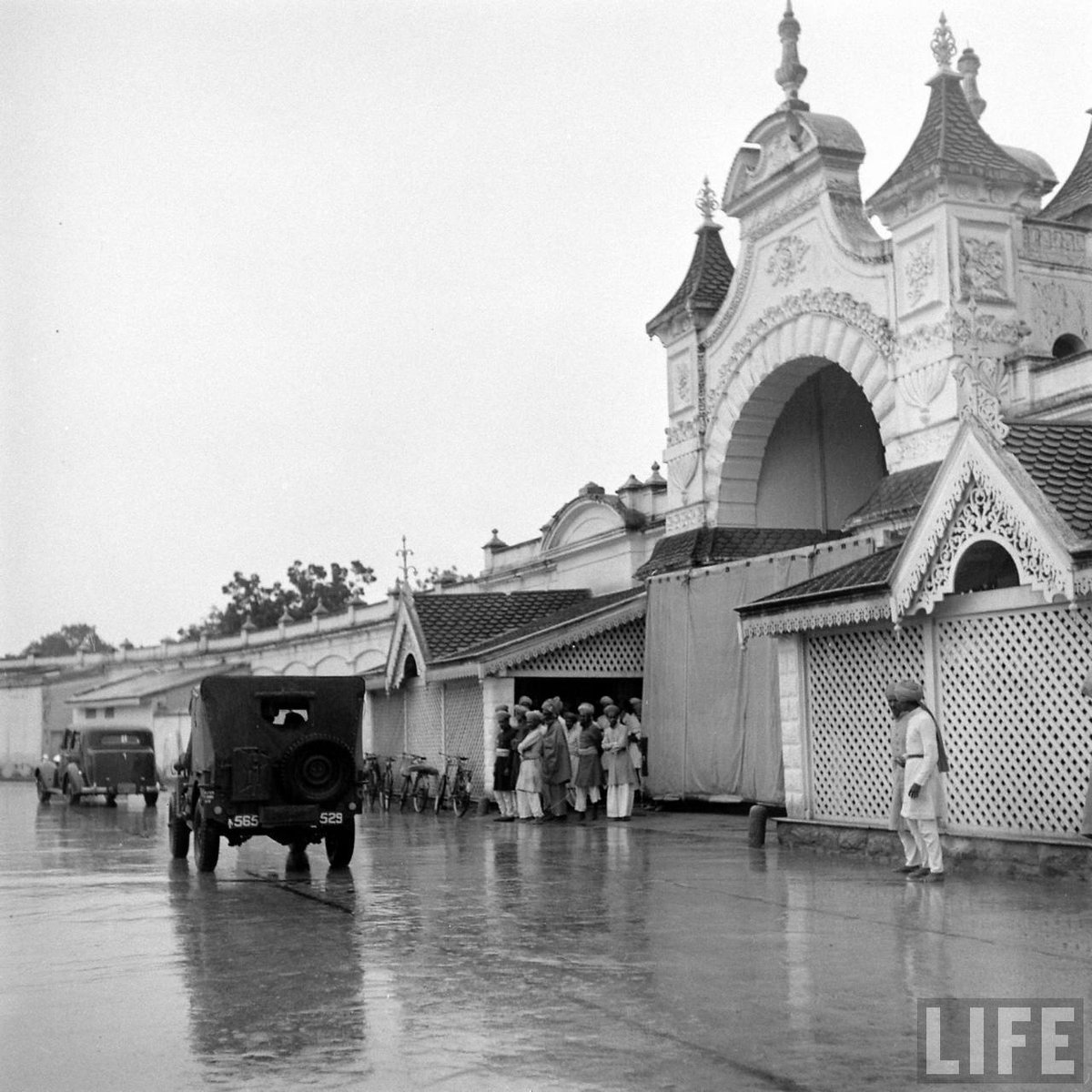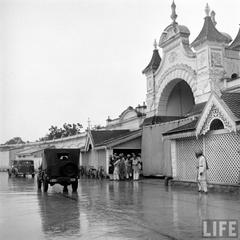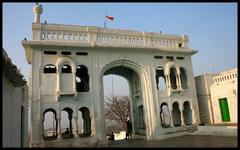
Visiting Guide for the State Bank of India, Secunderabad
Date: 22/07/2024
Introduction
The State Bank of India (SBI) stands as a monumental institution in the financial landscape of India, embodying a rich history and cultural significance that spans over two centuries. Established initially as the Bank of Calcutta in 1806, it underwent several transformations, becoming the Imperial Bank of India in 1921 and finally the State Bank of India in 1955 (source). SBI’s Secunderabad branch, in particular, holds a significant position in this storied history. Known for its strategic importance and architectural heritage, this branch has continually evolved to meet the changing economic needs of the region, making it a cornerstone of financial growth and innovation (source). Whether you are a local resident or a visitor, exploring the SBI Secunderabad branch offers a unique blend of financial services and a glimpse into India’s vibrant history (source).
Table of Contents
- Unveiling the Rich History of the State Bank of India
- Discover the Historical Significance of SBI Secunderabad
- Visitor Tips for a Memorable Experience at the State Bank of India, Secunderabad
Unveiling the Rich History of the State Bank of India - From Inception to Innovation
Origins and Early History
The State Bank of India (SBI) traces its origins back to the early 19th century. The Bank of Calcutta, later renamed the Bank of Bengal, was established on June 2, 1806. This institution, along with the Bank of Bombay (established in 1840) and the Bank of Madras (established in 1843), formed the three Presidency Banks of India. These banks were amalgamated on January 27, 1921, to form the Imperial Bank of India, which was the largest and oldest commercial bank in the Indian subcontinent.
Formation of State Bank of India
The Imperial Bank of India was nationalized under the State Bank of India Act, 1955, and renamed the State Bank of India on July 1, 1955. This move was part of a broader strategy by the Indian government to extend banking facilities to rural and semi-urban areas and to support the country’s economic development. The Reserve Bank of India (RBI) acquired a controlling interest in the bank, making it a government-owned entity.
Expansion and Growth
SBI’s growth trajectory has been marked by several key milestones. In 1959, the State Bank of India (Subsidiary Banks) Act was passed, enabling SBI to take over eight former state-associated banks as its subsidiaries. These included the State Bank of Bikaner, State Bank of Jaipur, State Bank of Hyderabad, State Bank of Mysore, State Bank of Patiala, State Bank of Saurashtra, State Bank of Travancore, and State Bank of Indore.
The bank’s expansion continued with the establishment of branches in various countries, including the United Kingdom, the United States, and Canada. By the 1970s, SBI had become a significant player in the global banking sector.
Technological Advancements
SBI has been at the forefront of adopting new technologies to enhance its services. In the 1990s, the bank introduced computerization and automation in its operations. The launch of the Core Banking Solution (CBS) in 2002 was a significant milestone, enabling customers to access their accounts from any branch.
In recent years, SBI has embraced digital banking, offering a range of online services such as internet banking, mobile banking, and digital wallets. The bank’s YONO (You Only Need One) platform, launched in 2017, integrates various financial services and products into a single digital interface.
Mergers and Consolidation
SBI has undergone several mergers and consolidations to strengthen its position in the banking sector. In 2008, the State Bank of Saurashtra was merged with SBI. This consolidation continued with the merger of the State Bank of Indore in 2010, and in 2017, the State Bank of Bikaner & Jaipur, State Bank of Hyderabad, State Bank of Mysore, State Bank of Patiala, and the State Bank of Travancore were integrated into SBI, making it one of the largest banking networks in the world.
Comprehensive Coverage
As of today, SBI offers a wide range of services including personal banking, corporate banking, and international banking. The bank’s customer support is robust, with 24/7 helplines and a strong presence in both urban and rural areas. SBI’s role in India’s economy is significant, providing financial services to millions and supporting various developmental projects.
Conclusion
The State Bank of India has a rich history that reflects the economic and technological advancements of India itself. From its early days as the Bank of Calcutta to its current status as a global banking giant, SBI has continually evolved to meet the needs of its customers. With ongoing technological innovations and mergers, SBI stands as a pillar of financial stability and growth in India and beyond.
Discover the Historical Significance of SBI Secunderabad - A Cornerstone of Financial Growth
Introduction
The State Bank of India (SBI) branch in Secunderabad is not just a financial institution but a significant landmark in India’s banking history. This article delves into the rich history, services, and visitor information about this iconic branch, catering to both locals and tourists alike.
Historical Background
The State Bank of India (SBI) in Secunderabad holds a significant place in the banking history of India. Established in the early 20th century, the branch has been a cornerstone in the financial landscape of the region. Secunderabad, often referred to as the twin city of Hyderabad, has a rich colonial history, and the establishment of SBI here was a strategic move to cater to the financial needs of the burgeoning population and the British military cantonment.
The SBI branch in Secunderabad has evolved over the decades, adapting to the changing economic landscape of India. Initially, it served the local population and businesses, but over time, it expanded its services to include modern banking facilities, catering to a diverse clientele. The branch has played a pivotal role in the economic development of Secunderabad, providing financial support to various sectors, including agriculture and small and medium enterprises.
Visitor Information
- Operating Hours: The branch is open from Monday to Friday, 10 AM to 4 PM, and on Saturdays from 10 AM to 1 PM. It remains closed on Sundays and public holidays.
- Services Offered: From traditional banking services like savings and current accounts to modern services like internet banking and personal loans, SBI Secunderabad offers a comprehensive range of financial solutions.
Travel Tips and Nearby Attractions
Located in the heart of Secunderabad, the branch is easily accessible via public transport. Nearby attractions include the famous Hussain Sagar Lake and the historic Secunderabad Clock Tower, making it convenient for visitors to explore the area.
Accessibility
The branch is wheelchair accessible, ensuring convenience for all visitors. There are also designated parking spots for customers.
Special Events and Guided Tours
While the branch does not offer regular guided tours, special events and financial literacy programs are occasionally conducted. It is advisable to check the official SBI website for updates on such events.
Visitor Tips for a Memorable Experience at the State Bank of India, Secunderabad
Introduction
The State Bank of India (SBI) in Secunderabad is not just a financial institution but a landmark with historical significance. Established in 1955, SBI is the largest and oldest bank in India, with its roots tracing back to the Bank of Calcutta in 1806. The Secunderabad branch, like many others, has played a pivotal role in the economic development of the region. Understanding this history can enrich your visit, providing context to the bank’s architectural and operational evolution.
History and Cultural Significance
The State Bank of India has been integral to India’s financial history. The Secunderabad branch’s establishment in 1955 is a testament to its enduring legacy. The building itself reflects the architectural styles of the mid-20th century and offers a glimpse into the past, making it a fascinating visit for history enthusiasts.
Visitor Information
- Operating Hours: The SBI Secunderabad branch typically operates from 10 AM to 4 PM, Monday through Friday, and from 10 AM to 1 PM on Saturdays. It is closed on Sundays and public holidays. Check the official SBI website for any changes in operating hours before planning your visit.
- Best Time to Visit: To avoid long queues and ensure a smooth experience, visit during mid-morning hours, preferably around 10:30 AM. This is when the bank is less crowded, and staff are more available to assist.
- Entry and Security: Upon entering the bank, you will go through a security check. Ensure you have a valid ID, such as a passport or Aadhaar card, as it may be required for entry. Photography inside the bank premises is generally prohibited, so it’s best to avoid taking pictures.
Banking Services
- Currency Exchange: For international tourists, currency exchange services are available. It’s advisable to carry some Indian Rupees (INR) for local transactions. The exchange rates at SBI are competitive, but it’s always good to compare with other exchange services.
- ATM Services: The SBI Secunderabad branch has multiple ATMs on-site. These ATMs accept international cards, including Visa, MasterCard, and American Express. However, be aware of any international transaction fees that your home bank may charge.
- Digital Banking: SBI offers robust digital banking services. If you have an SBI account, you can use the YONO app for various banking needs, including fund transfers, bill payments, and account management. Free Wi-Fi is available in the bank, allowing you to access these services conveniently.
Local Etiquette and Dress Code
- Local Etiquette: Understanding local customs can enhance your experience. In India, it is customary to greet with a “Namaste” and a slight bow. Patience is valued, especially in public places like banks. Queueing is common, and it’s important to wait your turn.
- Dress Code: While there is no strict dress code, dressing modestly is recommended. For men, this means wearing trousers and a shirt, while women should opt for dresses, skirts, or trousers that cover the knees and shoulders.
Nearby Attractions
- Secunderabad Clock Tower: Located just a few minutes away from the SBI branch, the Secunderabad Clock Tower is a historical monument worth visiting. Built in 1860, it stands as a symbol of the city’s colonial past.
- St. Mary’s Basilica: Another nearby attraction is St. Mary’s Basilica, one of the oldest Roman Catholic churches in Secunderabad. It offers a serene environment and beautiful architecture, making it a perfect spot for some quiet reflection.
- Shopping and Dining: Secunderabad is known for its bustling markets and diverse culinary scene. General Bazaar, located close to the bank, is a great place to shop for traditional Indian clothing, jewelry, and handicrafts. For dining, try local eateries offering Hyderabadi biryani, a must-try dish in the region.
Safety and Accessibility
- Safety Tips: Secunderabad is generally safe for tourists, but it’s always wise to stay vigilant. Keep your belongings secure and avoid carrying large sums of cash. If you need assistance, the bank staff and local police are usually very helpful.
- Accessibility: The SBI Secunderabad branch is wheelchair accessible, with ramps and elevators available for those with mobility issues. If you require any special assistance, it’s best to inform the bank staff upon arrival.
Conclusion with a Call to Action
Visiting the State Bank of India in Secunderabad can be a unique experience, blending financial services with cultural and historical insights. By planning ahead and understanding the local customs, you can ensure a smooth and enriching visit. For more detailed information, you can always refer to the official SBI website or contact the branch directly. Don’t forget to explore the nearby attractions and immerse yourself in the local culture. Download the SBI YONO app for seamless banking services on the go, and follow us on social media for more updates and tips.
Conclusion
Visiting the State Bank of India, Secunderabad, is more than a mere banking transaction; it is an opportunity to engage with a piece of India’s financial heritage. From its historical inception as the Bank of Calcutta to its current status as a global banking giant, SBI has continually adapted and grown to meet the needs of its diverse clientele. The Secunderabad branch, with its rich cultural and historical context, stands as a testament to SBI’s enduring legacy and its pivotal role in the region’s economic development (source). Whether it’s leveraging modern banking services, engaging with the local culture, or exploring nearby attractions like Hussain Sagar Lake or the Secunderabad Clock Tower, a visit to this iconic branch promises a comprehensive and enriching experience. Stay connected with SBI’s latest updates and services via their official website or the YONO mobile app, ensuring a seamless and informative visit (source).
References
- Unveiling the Rich History of the State Bank of India - From Inception to Innovation, 2024, source
- Discover the Historical Significance of SBI Secunderabad - A Cornerstone of Financial Growth, 2024, source
- Visitor Tips for a Memorable Experience at the State Bank of India, Secunderabad, 2024, source










